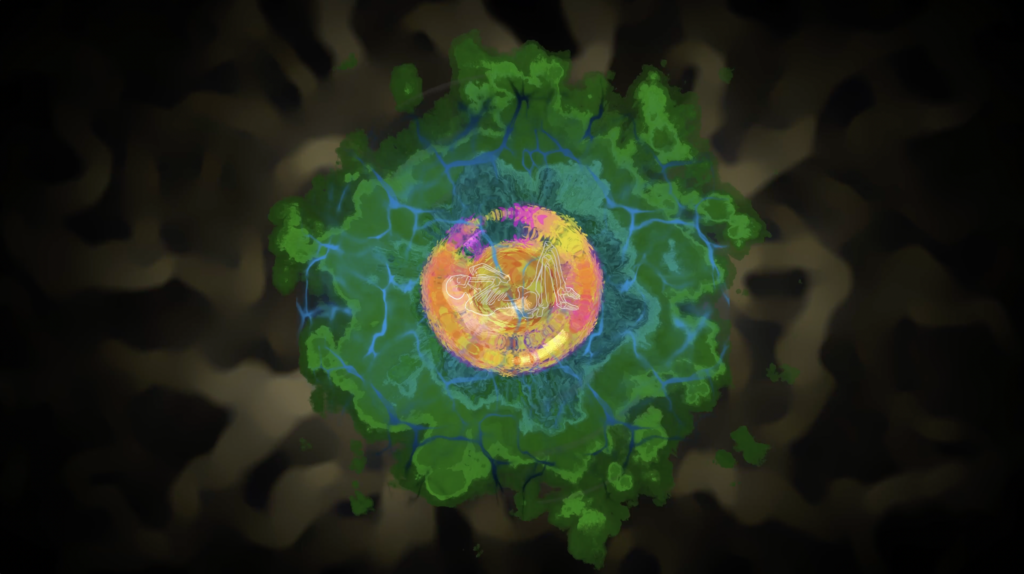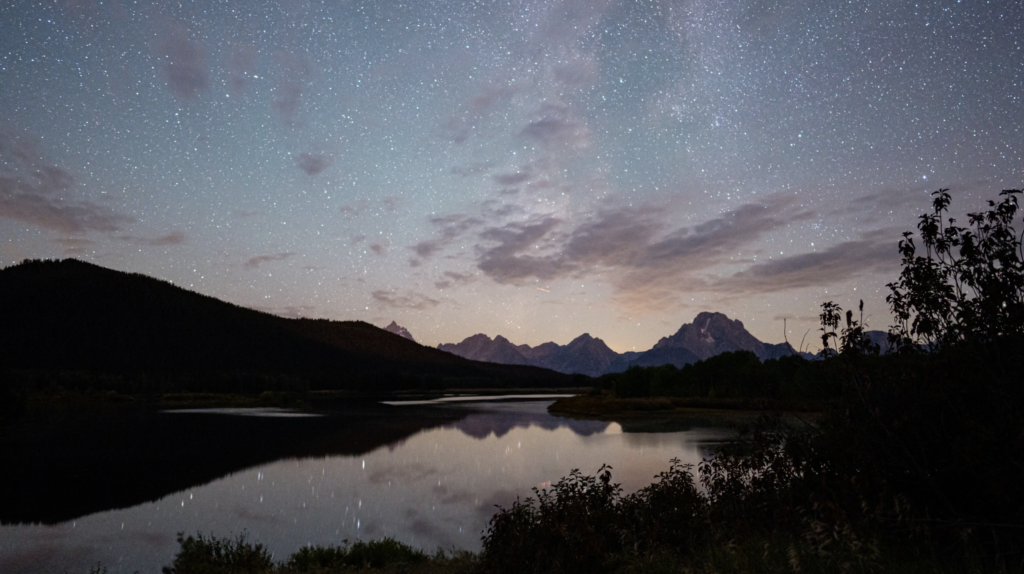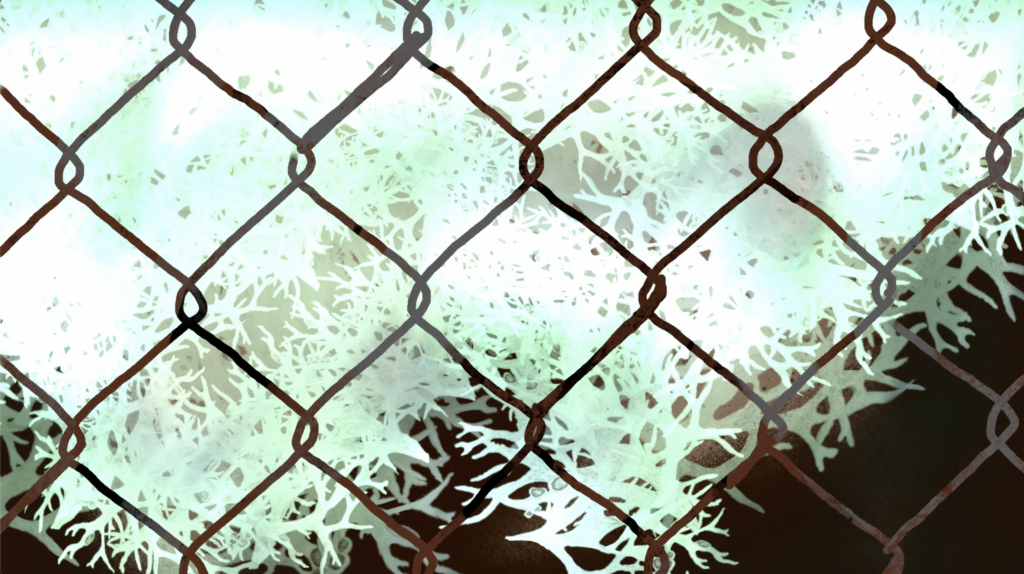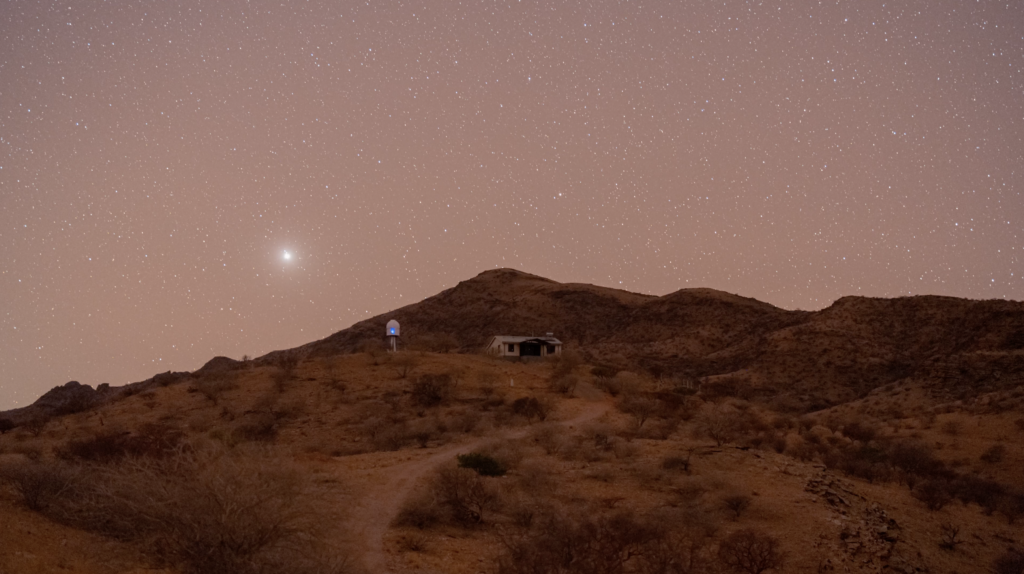Imagine that one man and one girl have found themselves as the last two people on earth. Time moves forward as it does, unencumbered in the slightest by the human story. The man endeavors to teach the young girl what she needs to know to survive in the world they are inhabiting, which he’ll most certainly depart before she does.
Without giving any spoilers, this is the premise of Andrew Krivak’s The Bear.
A group of four artists read The Bear as a part of Fargo, North Dakota, and Moorhead, Minnesota’s National Endowment for the Arts Big Read. What stood out to them was the enduring, omnipresent role that sky and land held throughout. So they set out to create an homage to the terrestrial and celestial characters in The Bear.
With support from The Spirit Room, a Fargo-based community arts nonprofit, the group created two art films, each roughly 15 minutes long. One centered on the sky while another focused on the land, but both were shown on an unexpected screen: Minnesota State University Moorhead’s Planetarium.

Astrophotographer Mike Abramyan and Doug Harbin, a composer and assistant professor at Moorhead’s Concordia College, teamed up to tackle the sky portion of the book’s interpretation. “One of the things Mike and I talked about while we were working was how it would feel if you were the last people on earth, how there wouldn’t be all these distractions that we think of today. We really wanted to create a sense of isolation and solitude,” Harbin explains.
Abramyan’s work naturally lends itself well to the task. He travels the world taking long-exposure images of the night sky. “With time lapses like this, one night of shooting takes about 12 hours and ends up only being a minute or two of footage, so I had to shoot quite a bit to fill this project,” Abramyan says. He sent Harbin footage of the time lapses he was taking as he developed them to inspire the musical component.
From there, Harbin sourced sound inspiration from NASA’s public archives that host, among other content, sounds recorded from a region of the Milky Way called Cygnus. He paired that with recordings that Abramyan shared with him from his desolate locations. In the end, “all of the sounds I used were generated from source material from the NASA website,” Harbin says.

Once their work was complete, their film—alongside the land-based one created by Gabrielle Cerberville and Carter Rice that focused on imagery of nature taking over man-made structures—was shown at the planetarium on Saturdays and Sundays across September and October of last year.
“The tricky thing was that we knew it would be projected on the [planetarium’s] dome, but that it would also be shown on regular, rectangular screens as well. So while the time lapses were shot in 360, in the end we did a rectangular, 16 x 9 film,” Abramyan says. “Still, it was really wide when people were in there experiencing it, so it was extremely immersive. It was a really special kind of unplugging from the rest of the world.”
On the final October 8th showing, the planetarium hosted an artist talk with all four artists sandwiched by two showings of their work. “It was cool to sit there with people who had just seen the film and see their initial reactions. They also had great, specific questions about how it was shot and the artistic process,” Abramyan adds.
“Many of the audience members had read the book, so they had really insightful questions about how the work related to it,” Harbin recalls. It was a full-circle moment for him, too. “For me, having childhood memories of going to the planetarium as a kid, filled with excitement from sitting through one of those shows as a kid… I hope that’s what we encapsulated with this project.”




Doug Harbin, Composer“We really wanted to create a sense of isolation and solitude. How would it feel if you were the last people on earth?”
About The Bear
The Bear by author Andrew Krivak is a post-apocalyptic fable by New England author Andrew Krivak about a father and daughter, the last two people on Earth, who live off the land at the foot of a mountain. When the daughter finds herself lost and alone, a bear appears to lead her back home.
About the NEA Big Read
The Spirt Room’s collaboration with the Minnesota State University Moorhead’s Planetarium. was made possible in part by the the National Endowment for the Arts Big Read.
This national program helps communities realize the benefits of reading together. Each year, grants are given to about 75 community reading programs around the country to create events and opportunities for their community to read and discuss one book together. Since 2006, more than 1,600 NEA Big Read programs have taken place in every U.S. state.
NEA Big Read is a program of the National Endowment for the Arts in partnership with Arts Midwest.
